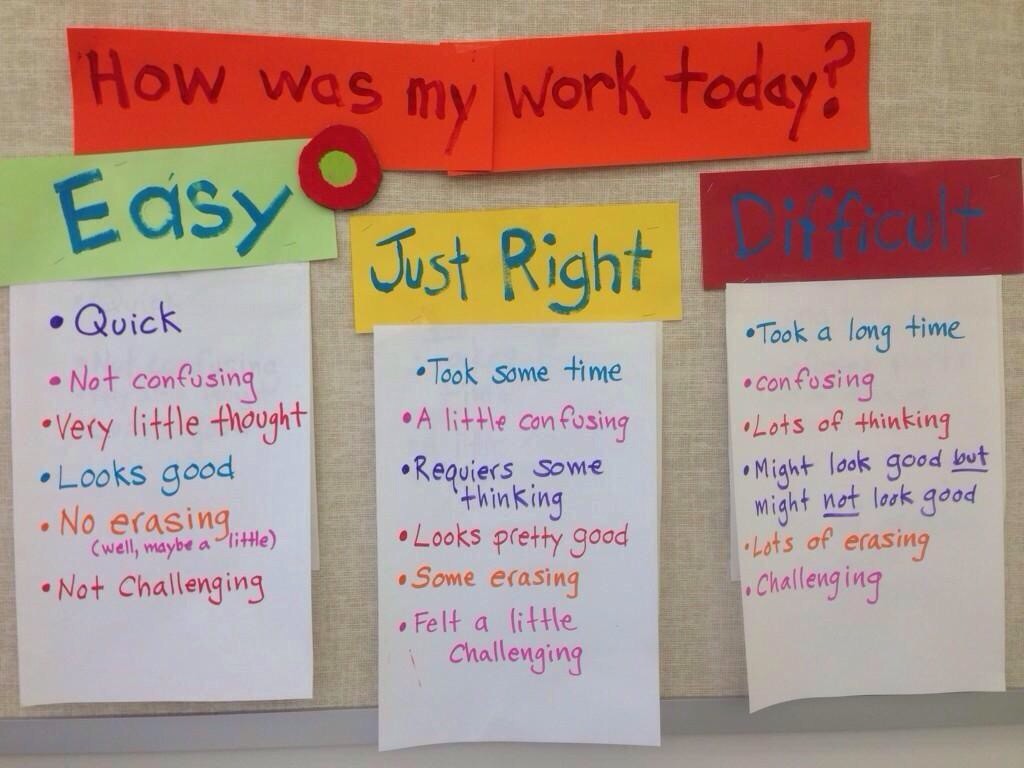Learning Lab serves as an opportunity to attain a specific strategy, lesson idea, or resource for your classroom. Everyday educators find a variety of activities that work in the classroom. #4OCF is proud to share the lessons, activities, and resources that have worked for our students. We hope that you can implement and modify these activities to meet the needs of your students.
A couple of years ago, a second grade colleague attended a reading workshop offered by Teacher’s College, and shared what she had learned. One idea she shared particularly struck me. It was a simple sheet on which students could record whether they thought their independent reading books were Easy for them, Just Right for them or Difficult for them. The terms weren’t new to me; our students had been choosing Just Right books for years, but at that moment it struck me as a perfectly good rubric for students to use to evaluate how they felt about their work in art. This is what I came up with:
Using this simple rubric allows me to monitor how students feel about their artwork and helps me to make sure that they are working to challenge themselves appropriately.
Since the term Just Right is basically a representation of Vygotsky’s Zone of Proximal Development (ZPD), much of what makes an activity Just Right is how challenging it is for a child. Depending on the task, I ask my students to jot down their level on either the front or backside of their paper:
- E for Easy
- JR for Just Right
- D for Difficult
- E/JR for work that was in between Easy and Just Right
- JR/D for work that was in between Just Right and Difficult
Additionally, I sometimes have them write a sentence or two about how they challenged themselves. Remember, what might come naturally for one child might be quite difficult for another. As a class, we often discuss aspects of a lesson that might be challenging for some or for all, which helps my students to clearly articulate their learning goals.
This rubric, paired with the sentences and the discussions not only help the students focus on certain areas for improvement, they also help me to understand where and how students may be struggling which helps me to set clear teaching goals and target my instruction more easily. I am sure with a few changes, you can tailor this simple system to make it Just Right for your classroom.
By Trevor Bryan @trevorabryan






Pingback: Celebrate This Week: Student Reflection | To Read To Write To Be